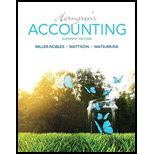
Concept explainers
Concept Introduction:
Forms of organizational structures of Businesses
• Several options exist for creation of new entities such as
• For instance, when the objective is to form a joint venture for a short duration, a partnership firm is the most appropriate since it allows for quick distribution of
• Similarly, opting for the corporate structure of organization of business comes with its own set of merits and demerits. Some of the advantages include perpetual continuity, separation of ownership from management, distinction of personal and business assets and liabilities etc.
Classes of shares:
• Shares provide partial ownership or a “share” of a corporation. There are two primary classes of shares – Equity Shares and
• Equity shares are the class of shares which carry voting rights and equity share holders are the true owners of the company as in the event of dissolution, equity shareholders get last preference in clearing the amounts invested and there is no guarantee of profits / dividend on an annual basis.
• Preference shares are the class of shares which do not carry voting rights and in the event of dissolution, preference shareholders get first preference in clearing the amounts invested and there is usually guarantee of profits / dividend on an annual basis. Convertible Preference shares are preference shares that carry the option to be converted into equity shares after certain duration.
Calculation of Shares to be issued
• Shares provide partial ownership or a “share” of a corporation. There are two primary classes of shares – Equity Shares and Preference Shares.
• Equity shares are the class of shares which carry voting rights and equity share holders are the true owners of the company as in the event of dissolution, equity shareholders get last preference in clearing the amounts invested and there is no guarantee of profits / dividend on an annual basis.
• In the event that the capital to be issued is decided, the number of shares to be issued is calculated as the capital to be raised divided by the issue price of the equity shares.
Requirement 1
Main advantage of corporate structure of ownership
Requirement 2
Which class of shares should be issued.
Requirement 3
To Calculate:
Number of shares to be issued.
Want to see the full answer?
Check out a sample textbook solution
Chapter 13 Solutions
Horngren's Accounting (11th Edition)
- ???!!arrow_forwardIsla Innovations purchased a patent on 1 August 2020 for $360,000. The economic benefits were expected to last 10 years, but the patent's legal life was 20 years. Also, during 2020/21, Isla incurred research and development costs of $180,000. What is the carrying amount of the patent on 31 July 2021?arrow_forwardAdams Corp. has a gross profit of $1,200,000 and $350,000 in depreciation expenses. Selling and administrative expenses amount to $175,000. The tax rate is 35%. Compute the cash flow for Adams Corp. a. $750,000 b. $198,750 c. $788,750 d. $806,250arrow_forward
- Omega Industries has total material costs of $50,800 and total conversion costs of $74,600. The equivalent units of production are materials: 14,500 units and conversion costs: 15,500 units. Compute the unit costs for materials, conversion costs, and total manufacturing costs. (Round answers to 2 decimal places.)arrow_forwardIn September, a processing department at Omega Corporation had an ending work in process inventory of $18,500. During the month, $680,000 of costs were added to production, and the cost of units transferred out was $700,000. What was the cost of beginning work in process inventory for the department in September? a) $38,500 b) $48,500 c) $28,500 d) $18,500arrow_forwardSuppose you received a total of $1,245 in dividends plus $16,430 in proceeds from selling 520 shares of Tesla Inc. that you had bought at $28.75 a share. What is your capital gains yield on this stock? Answer this financial accounting problem. a. 14.92% b. 9.90% c. 16.54% d. -2.43% e. 7.65%arrow_forward

 AccountingAccountingISBN:9781337272094Author:WARREN, Carl S., Reeve, James M., Duchac, Jonathan E.Publisher:Cengage Learning,
AccountingAccountingISBN:9781337272094Author:WARREN, Carl S., Reeve, James M., Duchac, Jonathan E.Publisher:Cengage Learning, Accounting Information SystemsAccountingISBN:9781337619202Author:Hall, James A.Publisher:Cengage Learning,
Accounting Information SystemsAccountingISBN:9781337619202Author:Hall, James A.Publisher:Cengage Learning, Horngren's Cost Accounting: A Managerial Emphasis...AccountingISBN:9780134475585Author:Srikant M. Datar, Madhav V. RajanPublisher:PEARSON
Horngren's Cost Accounting: A Managerial Emphasis...AccountingISBN:9780134475585Author:Srikant M. Datar, Madhav V. RajanPublisher:PEARSON Intermediate AccountingAccountingISBN:9781259722660Author:J. David Spiceland, Mark W. Nelson, Wayne M ThomasPublisher:McGraw-Hill Education
Intermediate AccountingAccountingISBN:9781259722660Author:J. David Spiceland, Mark W. Nelson, Wayne M ThomasPublisher:McGraw-Hill Education Financial and Managerial AccountingAccountingISBN:9781259726705Author:John J Wild, Ken W. Shaw, Barbara Chiappetta Fundamental Accounting PrinciplesPublisher:McGraw-Hill Education
Financial and Managerial AccountingAccountingISBN:9781259726705Author:John J Wild, Ken W. Shaw, Barbara Chiappetta Fundamental Accounting PrinciplesPublisher:McGraw-Hill Education





